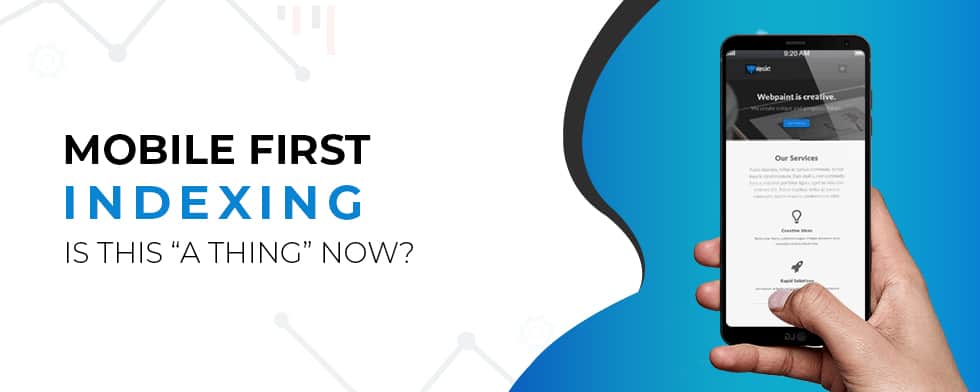
Mobile first indexing has been the talk of the SEO world for a long time now. So, when Google officially announced its rollout last week and started migrating the sites following the best practices of mobile-first indexing, it received a mixed response from the SEO community rather than all claps and cheers. All thanks to the worldwide confusion that’s been circling around this whole mobile indexing thing.
So, what is mobile indexing and what does it mean to you as an entrepreneur? Are you required to undone everything and start afresh from scratch? Can your mobile-friendly site handle this on its own? Is this mobile indexing a blessing or is this going to be another disaster for you? Let’s find out.
Well, it is exactly what it sounds like, Google predominantly using the mobile version of the content for indexing and ranking. In simple words, it is Google’s way of serving up more relevant results to its mobile users.
From now on, the mobile version of your website will become the starting point for Google to include in their index, along with the baseline for how it determines rankings.
Google is already identifying the websites that comply with the company’s criteria for mobile-friendly design and are using the mobile version to populate the SERPs.
For instance, if the search giant selects your website to be involved with mobile-first index rollout, Google crawlers will start crawling your mobile site first and then the desktop version rather than the other way round.
Most likely the m-dots. So, if your website has different URLs for both mobile and desktop version, your website will be indexed based on the mobile version.
But then, if you have the same URL on both mobile and desktop, still it can be affected as your website might supply the crawlers different information for both versions, in which case, Google will prioritize the information for mobile when indexing.
The simplest answer I could suggest is to use a responsive design. Because in case you remember, Google bots have been checking the mobile performance including the loading speed, content layout, etc. even before mobile-first indexing. Responsiveness is the way to go.
And in case you are using a separate mobile site, then you should consider the following options.
Well, no. if you are certain that your website is fully aligned with Google’s rules and best practices, then you need not do anything. But in case you have doubts, hire a worthy SEO team that knows well how to execute this perfectly.